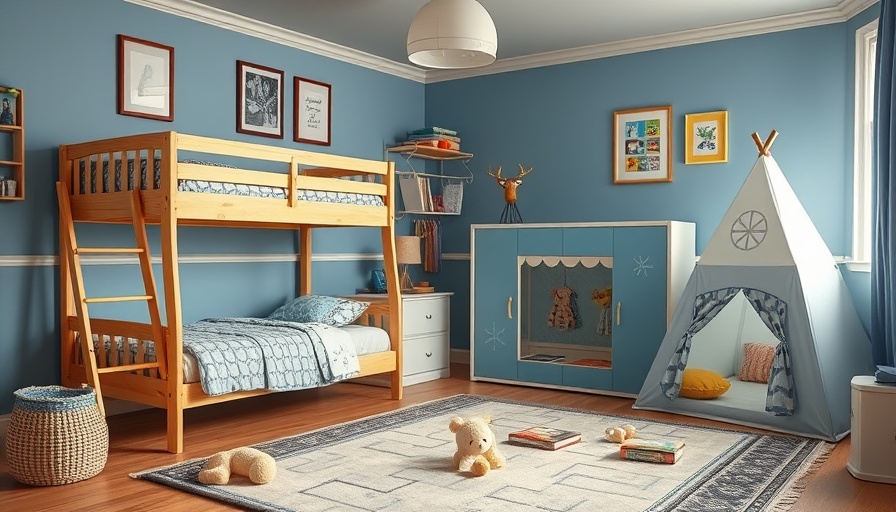
Crafting a Harmonious Shared Space for Kids
Designing a children's room for siblings can be both a challenge and an exciting opportunity for creativity. While having their own separate space is ideal, many families find that sharing a room is practical and helps foster companionship. In this article, we’ll explore practical tips and innovative ideas to create the perfect shared kids' room that balances functionality, individuality, and harmony.
Understanding the Importance of Personal Space
Shared bedrooms need to consider the personal space of each child. It’s crucial to establish ‘zones’ within the room to give each child a sense of ownership. By creating designated sleeping and play areas, children can take responsibility for their spaces, reducing confusion about tidying up. You can utilize furniture like room dividers, which not only separate areas but also add to the room's aesthetic.
Designing for Different Needs
A significant challenge in a shared room is meeting the varied needs of children of different ages or genders. One effective solution is to choose a neutral color palette that serves as a backdrop. Each child can then personalize their space with bedding, artwork, or accessories that reflect their preferences. This encourages self-expression without overwhelming the coherence of the room.
Storage Solutions to Tame the Mess
Kids are notorious for creating clutter, which multiplies when sharing a space. To combat this, consider implementing multifunctional furniture, such as beds with built-in storage, or ottomans that can serve as both seating and storage. Encourage kids to sort their toys into labeled bins, making clean-up a fun and engaging process. Establishing a cleaning schedule not only helps maintain tidiness but also teaches kids responsibility.
Multi-functional Furniture and Sleeping Arrangements
When planning a shared room, think creatively about sleep arrangements. Bunk beds are a popular choice, saving space while adding a fun element for children. Alternatively, lofted beds free up floor space for play. If the ages and sleep schedules of your children differ significantly, consider adjustable beds that can easily transform from a sleeping area into a play or study zone during the day.
Hosting Sleepovers and Managing Visitors
Another important aspect to consider is accommodating friends and playdates. Having a mattress or inflatable bed available can help children entertain friends without sacrificing their own space. Portable bedding options like a sofa bed in a common area can provide overflow sleeping accommodations, allowing for flexibility during sleepovers, and creating a fun camping vibe at home.
Reinforcing Relationships Through Shared Spaces
Projects often focus on challenges, but it's vital to acknowledge the benefits of sibling sharing. Kids develop negotiation skills, learn compromise, and foster stronger bonds when sharing responsibilities and resources. Encourage teamwork in design by letting them collaborate on their room setup or decor, ensuring that their space feels uniquely theirs while strengthening their sibling relationship.
Conclusion: Making the Most of Sharing
Designing a shared room presents unique challenges, yet it also offers valuable life lessons. By embracing creativity and practicality, you can create a space that nurtures individuality while fostering connection. Every child deserves a space that feels like their own, and with thoughtful planning, your shared kids' room can be both functional and reflective of each child's personality.
So, as you gear up for your decorating venture, don’t hesitate to consider hiring professionals for more complex designs to ensure safety and quality that can last for years to come!
 Add Row
Add Row  Add
Add 




Write A Comment